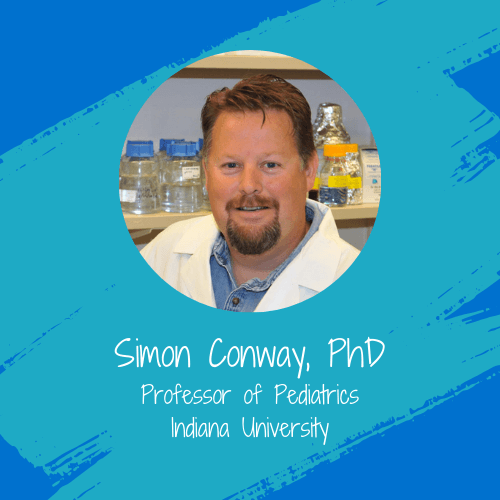
Dr. Simon J Conway, PhD is a Professor in the Herman B Wells Center for Pediatric Research at Indiana University School of Medicine, Indianapolis.
Q: Dr. Conway, what made you want to become a scientist?
A: In school I actually enjoyed biology and chemistry and then when I got to university, I realized a lot of biochemistry was problem solving, with a bit of detective work thrown in. That appealed to my curious independent self.
Q: What does your lab study?
A: Our research uses genetic mouse models to investigate the underlying mechanisms that cause congenital and postnatal acquired birth defects.
Q: How did you come to study Barth syndrome?
A: We were asked to collaborate with a pediatric hematologist-oncologist colleague (Dr. Grzegorz Nalepa) who was treating and later identified a Barth point mutation in a young patient here at Indiana University Children's Hospital. We went on to generate a patient-tailored mouse knockin model and hope that this novel mouse with help us understand how TAFAZZIN mutations affect so many different organ systems.
Q: Why is NIH/national funding important to you/your lab?
A: It is everything, as we could not perform the mouse modeling that NIH support enables us, as it is time-consuming, labor-intensive and expensive. An NIH grant enables biomedical investigators to aggressively pursue their passions, ideas and curiosities.
Q: Can you tell us what your favorite part about being a scientist is?
A: New data and deciphering what it means (or not) - nothing beats it!




